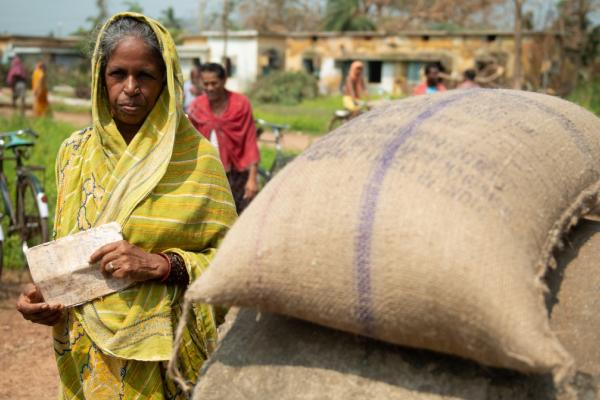The social sector is widely dispersed, comprising a variety of organisations usually considered outside the confines of the market and lacking the structure and resources required to achieve scale and generate impact. There are more than 2 million social enterprises—organisations that prioritise social or environmental mission over profits—that provide direct employment and skills training to underserved communities, with women forming up to 65% of their part time workforce (British Council 2016, 3,14). Yet, their contribution to our economy has not been duly acknowledged and they do not form part of the growth of the Indian entrepreneurship ecosystem.
While several forms of social enterprises exist in practice, these can broadly be categorised into Non-Profit Organisations (NPOs) and For-Profit Social Enterprises (FPEs). NPOs are usually structured as non-governmental organisations, Section 8 companies, trusts or societies. FPEs can be private limited companies, partnerships or sole proprietorships.
Social enterprises are financed mainly through philanthropy, impact investment, incubator or accelerator programmes. For the larger organisations, there are also grants from multilateral agencies/development finance institutions. FPEs mainly look for concessional loans at below market interest rates and equity-like investments. Other means of financing include contracts from governments, fees, sales or charges for work done and in-kind cash and donations in the form of equipment or volunteering time. On a much smaller scale, companies fund non-governmental organisations through their corporate social responsibility initiatives. (British Council 2016, 18).
[M]ost Indian social enterprises are small in size with nascent but growing operations and find access to finance the most significant impediment to growth.
Traditionally, NPOs have sought donations and philanthropic grants for their activities. In the past decade, however, as the India Philanthropy Report 2020 observes, domestic philanthropy in India has evolved significantly from non-profit giving to structured investment aimed at creating a large-scale impact. In 2018, for instance, this reached Rs. 55,000 crore and individual contributions accounted for 60% of the total private funding of philanthropy in India. India’s impact investment space has also grown tremendously in terms of deal size and volume. Between 2010 and 2019, more than 550 Indian FPEs received around $10.8 billion in impact investment. In 2019 alone, this figure was at $2.7 billion (Impact Investors’ Council Report 2020, 11). But these forms of funding are concentrated in late-stage or mature social organisations.
Despite this seemingly wide range of funding options, according to a 2018 report by Intellecap, most Indian social enterprises are small in size with nascent but growing operations and find access to finance the most significant impediment to growth. This manifests as a difficulty to maintain regular cash flow, a failure to receive grant funding and constant demand for capital. FPEs, in particular, face a difficulty in obtaining seed or very early stage funding. This acts as a ‘vicious cycle’ since these organisations cannot attract funders without proving impact, for which, in turn, they require funds (British Council 2016, 18, 20).
1. Why do we need a social stock exchange?
A social stock exchange (SSE) as envisaged by a recent report by the Securities and Exchange Board of India (SEBI)— the SEBI Report—enables Indian social enterprises to list their securities or other financial instruments, providing them with an avenue for raising capital for their operations and growth, and reducing their dependency on ad hoc funding like grants or donations. This would operate as a separate segment under existing Indian stock exchanges, enabling socially minded investors to diversify their investment portfolio and developing a strong social securities market in the country.
The British Council Report observed that 32% of Indian social enterprises have seen a general lack of understanding among banks and financial organisations about their work and 20% reported a lack of awareness amongst community members about their goals, functions and objectives. The report also found that about 33% of Indian social enterprises felt that their limited networks act as a barrier to accessing investors.
[S]tock exchanges would bridge the funding gap for social enterprises & enable a growth of strong professional networks ... in order to guide social enterprises.
SSEs would help improve visibility and knowledge, among all stakeholders, especially funders, issuers and customers, about the contributions of social enterprises to the economy. They would also establish procedures to standardise social finance transactions, build awareness about the needs and challenges of this sector and develop social capital. These stock exchanges would bridge the funding gap for social enterprises and enable a growth of strong professional networks of investors and subject matter experts in order to guide social enterprises. They therefore create the necessary social investment ecosystem for enterprises and investors, whose objective is to generate maximum positive social impact and place environmental, social and governance (ESG) features within the pursuit of profits and growth.
2. Why discuss social stock exchanges now?
SSEs were set up as a “market-based approach to social problem solving” on the view that “public spending on social welfare, development assistance, and philanthropy is generally ineffective” (Dadush 2015, 152). The first SSE to be launched, the United Kingdom’s SSX, functions purely as an information provider and as a matching platform between investors and social enterprises “to create an efficient, universally accessible buyers’ and sellers’ marketplace”. It does not permit equity trading. Several SSEs have since operated worldwide: Brazil’s BVSA, Canada’s SVX, Mauritius’ Impact Exchange, Singapore’s IIX and South Africa’s SASIX. Their objectives and operations vary and they support diverse types of financial instruments.
SASIX works like a commercial stock exchange applying the same rigorous due diligence considerations to social enterprises. BVSA facilitates a dialogue between investors and NGOs whose projects are listed after a rigorous screening process and the exchange monitors end use of funds generated so they are only used for stated objectives. SVX and IIX permit enterprises to raise capital via crowdfunding and private placement of securities to retail and accredited investors. SVX lists equity and preference shares, bonds, convertible debentures and fund units. Enterprises listing on IIX need to show strong social or environmental goals and regularly publish social impact assessments. This exchange facilitates trading in shares and bonds, including sustainability bonds, which raise large amounts of private capital by pooling impact generating enterprises. These bonds are customisable to a variety of sectors and geographies (KPMG Report 2020; SEBI Report 2020).
Developments in ethical business practices & regulation frameworks from around the world … have been key drivers pushing for reform in Indian laws.
In India, the concept of the SSE gained publicity after the union finance minister, in her 2019-20 budget speech, outlined a vision of the SSE: “to meet various social welfare objectives related to inclusive growth and financial inclusion”. SEBI then constituted a working group to make recommendations for a regulatory framework for listing financial instruments issued by social enterprises and to give a fillip to sustainable and responsible investing practices in India.
This is not a new idea. Developments in ethical business practices and regulation frameworks from around the world, particularly from the European Union and North America, have been key drivers pushing for reform in Indian laws. These, for instance, include changes to India’s Companies Act, 2013 to ensure that businesses work in the interest of all stakeholders including the community and the environment, SEBI’s annual business responsibility reporting requirements and the Ministry of Corporate Affairs’ National Guidelines on Responsible Business Conduct in 2018 and the National Action Plan on Business and Human Rights of 2019.
3. How does the SEBI report help India’s social enterprises?
The SEBI report provides a simple and succinct definition of a social enterprise as “a class or category of enterprises that are engaging in the business of ‘creating positive social impact’”, which are then categorised as NPOs and FPEs. This is not merely a symbolic exercise. It is a powerful first step towards their better organisation and movement to scale, since as legal theorists point out, a clarity of definition creates an authoritative social reality and lends it effective permanence. It also recognises the necessity of treating NPOs differently from FPOs and developing innovative investment options for NPOs, separate from those available for FPEs. Institutional listing, with its emphasis on enhanced and continuous disclosure, will promote transparency and accountability. This would lead to strong, fair and impartial corporate governance practices for the social enterprises that list with the proposed SSE. Strict checks and balances would prevent undue influence and misappropriation of funds.
The Indian SSE, as this report suggests, supports innovative outcomes based financial instruments such as Pay for Success (PFS) bonds like social impact bonds or Development Impact Bonds (DIBs), zero coupon zero principal bonds and sovereign wealth funds, using which NPOs can finance their operations. For FPEs, the SEBI Report recommends that the SSE could popularise available funding options including the relatively mainstream equity funds and specialised social venture funds. These capital pooling options are highly underutilised in India, despite there being no legal or regulatory impediment on their use for this purpose.
It is (therefore) critical to spread awareness promoting the use of [capacity building fund] among all stakeholders, particularly philanthropic donors, CSR spenders & the government.
SEBI’s proposal to standardise the minimum reporting framework for measuring the social impact of both NPOs and FPEs, with the use of clearly defined metrics, is noteworthy. This can provide investors and regulators with clear and in-depth understanding of the work these enterprises carry out and, more importantly, accurate information about their governance, funding history, status of their legal/regulatory compliance and financial situation. However, as the SEBI report recognises, in practice, this may pose a substantial challenge for NPOs on account of the sheer number operating in India, the diverse range of activities they are engaged in, the fundamentally different nature of operation of NPOs and FPEs and vastly differing expectations that investors have from them, all of which makes this task extremely difficult. FPEs that list their equity on the SSE are additionally subject to SEBI’s eligibility for listing like minimum net worth or average operating profit thresholds, and other regulatory compliance requirements applicable to equity listings on the main stock exchanges.
A ‘capacity building fund’, as suggested by SEBI is a welcome move. This is urgently required to support smaller NPOs ramp up their capability to provide the enhanced reporting that investors usually demand. It is therefore critical to spread awareness promoting the use of this fund among all stakeholders, particularly philanthropic donors, CSR spenders and the government.
4. Will SEBI’s proposals on the Indian Social Stock Exchange work?
In the absence of a clear understanding of the contours of the Indian social investment ecosystem, attempts to operationalise SEBI’s suggestions may face substantial challenges. We may need an independent social investment market builder, similar to the UK’s Big Society Capital, to help Indian social enterprises get ‘investment ready’, mainly to understand the implications of being listed, raising equity capital and preparing investment related documentation.
Social enterprises would be vetted to be eligible for listing through an independent assessment of their (i) commitment to address social problems (ii) capacity to generate and report impact, and (iii) ability to manage funds. This due diligence should be supported by a continuous monitoring of fund utilisation by these enterprises. It is, however, important to recognise the nascency of the Indian social sector and the need to develop satisfactory social reporting, impact evaluation and social audit capabilities among different actors. To this end, the SEBI report recommends a ‘self-declaration’ model for social enterprises in the immediate term. Any entity that declares an intent to create a social impact and commits to measuring and reporting that impact is considered a social enterprise. This soft approach of self-governance for NPOs with a focus on the voluntary nature of compliance will serve the limited purpose of monitoring their operations. We need stronger sanctions for failures by NPOs to adhere to required standards of reporting and compliance through enforcement or delisting mechanisms.
It is important to recognise that impact bonds are time & budget-intensive because of their operational expenses & complicated structures.
Dadush (2015) suggests that SSEs should also screen investors before granting platform access, impose a minimum investment duration condition and require them to subscribe to a patient-investor code of conduct to ‘minimize commercial pressure to drift’ from the social mission (147, 184). Typical investors need to have a longer investment horizon and understand the risk of no or low returns on investment. SSEs are unsuitable for investors looking for immediate returns over the short term. The regulatory framework envisaged for the Indian SSE should clearly discourage such ‘quick return’ demanding investors and, at the same time, educate investors to deepen their understanding about ‘good returns’ on their investment.
SEBI’s proposals pose certain operational challenges that need to be addressed before the SSE can function. The Report recommends that NPOs should register with Information Repositories (PFSIRs), this registration however is mandatory. GuideStar India, Darpan from Niti Aayog and Credibility Alliance are listed as existing IRs to act as ‘data feeders’ to the proposed SSE, providing credible and standardised reporting information that can be independently verifiable by funders. The SEBI report therefore relies heavily on IRs to build confidence in the NPOs. In their feedback to SEBI’s working group, NPOs have recognised that only a few IRs have been accredited to offer these services. Several authors also point out that accreditation of investors, businesses and intermediaries remains a big challenge around the world and the Indian SSE will be no exception.
Even in the absence of any obvious regulatory hurdles for listing so far, Section 8 companies have not been enthusiastic about taking up the existing option of a direct listing of shares or debt instruments due to their ‘inherent inability to provide financial return on investments’. It is not clear how the proposed Indian SSE can ensure that this does not occur to non-profits going forward since investment in such enterprises also cannot assure market returns.
[A]ll efforts need to be directed to make sure that an enabling regulatory environment is created for the planned SSE with a minimal compliance burden imposed on the enterprises, social entrepreneurs & investors.
SEBI’s working group advocates payment for success PFS instruments for the Indian SSE. These generate financial returns for the investor only when specific measurable social outcomes are achieved. Depending on the objective of the PFS contract and beneficiary needs, these outcomes vary. For instance, in the primary education sector, these outcomes could range from higher enrolment in schools and improved learning outcomes in literacy and numeracy for school children, better life skills for adolescent girls and remedial learning for children.
However, the jury is still out on whether this variant of such a results-based financing model is ideal for India whose experience with PFS contracts began with the projected success of the Educate Girls Development Impact Bond in 2014. This DIB, the world’s first in education, enrolled more than 380,000 out of schoolgirls in primary schools, achieved better learning levels for 650,000 children in English, Hindi and Mathematics and promoted cumulative benefit to more than 4.9 million children overall. It prompted the launch of the Quality Education India DIB and several impact bonds under the India Education Outcomes Fund that are currently in operation. It is important to recognise that impact bonds are time and budget-intensive because of their operational expenses and complicated structures. They are designed to pay for outcomes that matter for impact, but not those that cannot be measured, so the right design is critical. However, critics of these outcomes financing models indicate that social outcomes are ‘notoriously difficult to measure’ (Roy, McHugh and Sinclair 2018). Superficial strategies for short term results are not sustainable in the long term.
5. Conclusions
As the Covid-19 effects on the world economy show, it is critical for public and private sources of capital to come together and develop ingenious methods to ensure that capital flow to the social sector is unhindered and capital is utilised effectively to generate a lasting impact for the community. Institutional support through SSEs ensures that more investors are encouraged to integrate environmental aspects (such as resource conservation, environmentally sustainable working practices), social aspects (including privacy, data protection, employee welfare) and governance aspects (like board diversity, conflicts of interest resolution mechanism, independent oversight of management) into the evaluation of enterprises, moving beyond financial statements.
To this end, all efforts need to be directed to make sure that an enabling regulatory environment is created for the planned SSE with a minimal compliance burden imposed on the enterprises, social entrepreneurs and investors. There should be clear listing criteria set out for social enterprises using this platform, and the listing guidelines should provide investors with sufficient incentives to increase their investment. The standards of social impact assessment and financial reporting should be kept robust to maintain credibility.
SEBI should work with Indian stock exchanges to spearhead the movement to build awareness among the NPO community about the advantages of listing on the SSE…
The proposed Indian SSE has been pitched as uniquely distinct from SSEs around the world because it ‘provides a comprehensive solution for both FPEs and NPOs… and goes beyond pure matchmaking and discovery’ to institutionalise common reporting standards, provide direct listing on the SSE, ‘streamline funding mechanisms for NPOs’, ‘promote new funding instruments and structures and develop the ecosystem for the growth of social finance’ (SEBI report 2020, 14-15). This is an important distinction since SSEs operating from 2013 are still struggling to bring regulatory order to the social finance sector. This could be, as Dadush (2015) finds, because these SSEs ‘rely too heavily on the blueprint set by commercial stock exchanges which prioritises investors over investment-affected individuals and communities…obscures the interests of beneficiaries…’ (147).
SEBI should work with Indian stock exchanges to spearhead the movement to build awareness among the NPO community about the advantages of listing on the SSE, including the scope for innovative structuring of investment transactions, through which these enterprises can tap into several funding sources. This can infuse dynamism into the social sector to bring in the expertise to drive change and sustain long lasting reform.
Social stock exchanges now operate across the globe. Support should be extended to such initiatives in India’s efforts to enable the country to catch up with the rest of the world.









